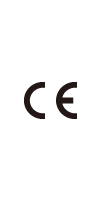Q&A
About Standards
List of Standard Certifications
![]() About Photobiological Safety Evaluations of LED Lighting Used for Image Processing
About Photobiological Safety Evaluations of LED Lighting Used for Image Processing
![]()
1. About Photobiological Safety Evaluations of LED Lighting Used for Image Processing
In 2006, the International Electrotechnical Commission published the IEC 62471 "Standard Regarding Photobiological Safety of Lamps and Lamp Systems," and LED lighting is included in the scope of application for this standard.
IEC 62471 acts as a guideline for conducting evaluations of photobiological safety, and it is an international standard that is used during evaluations to assess the risk of damage to the skin and eyes caused by light.
Photobiological risk can be divided into 4 different risk groups (degrees of hazard) based on the degree of photobiological damage caused.
Our company has implemented risk group classification for image processing LED light units for the following evaluation items. (Applicable standard: IEC 62471 Edition 1.0 (2006))
"Evaluation Items"
Photobiological Risk
1) Eye damage caused by near ultraviolet radiation
2) Retinal damage caused by blue light
3) Retinal damage caused by blue light from miniature light sources
4) Retinal heat injuries
5) Retinal heat injuries caused by low visibility light
6) Eye damage caused by infra-red radiation
7) Heat injuries to the skin
Risk Classification
1) Exempt (exempt from hazard classification): Does not cause any form of photobiological damage
2) Low risk (low degree of hazard): Does not cause damage that would limit the victim's normal functioning
3) Mod. risk (moderate degree of hazard): Does not cause damage that would lead to the victim feeling nauseous or feeling any heat related discomfort
4) High risk (high degree of hazard): Damage is caused by temporary or short duration exposure to light
2. CCS's Efforts
To enable our customers to use our LED light units in a safe manner, our company has implemented a classification system to assess the degree of risk for each of the individual light units.
If you are considering to purchase a LED light unit, or have already purchased one from us, you can find risk related information in the specifications section on the product information page for the applicable image processing LED light product.
![]() Please provide us with information on the applicability of the KC certification system.
Please provide us with information on the applicability of the KC certification system.
![]()
Conclusion:
Since LED light units for image processing use and LED light unit dedicated power supplies are designed for industrial use, we have determined that they are outside of the scope of South Korean product safety compliance standards.
QA No. 11-0014
![]() Please tell us more about the applicability of CCC China compulsory certification.
Please tell us more about the applicability of CCC China compulsory certification.
![]()
Conclusion:
Our company's light units/power supplies that operate at less than 36V do not fall within the scope of "CCC China compulsory certification."
Summary:
Based on the memo entitled "Mandatory Product Certification Catalog Description and Definition Table" provided in 2012 in issue 30 of the public notifications distributed by the Certification and Accreditation Administration of the People's Republic of China,
the following items have been established.
| 1. | For electrical/electronic products, excluding communication terminals and electrical welding devices, certification only applies to those products for which their scope of usage involves direct or indirect connection with a Control Unit that provides more than 36V (DC or effective AC value). |
|---|---|
| 2. | For electrical/electronic products, excluding electrical cables for railway/locomotive vehicles, in-vehicle mobile terminals, or other products that require special mention, products that are designed and manufactured with a special design and mounting structure for use in automobiles, motorcycles, trains, marine vessels, and aircraft are considered to fall outside of the scope of CCC certification. |
| 3. | For multi-function products that are composed of two items or more than two items listed in the compulsory product certification catalog, they shall be classified based on the primary function and primary usage of the product. Multi-function products must conform with the certification implementation rules for such functional products that share the same primary function, and at the same time they must also conform with the certification implementation rules for functional products that share their other functions. |
| 4. | When determining which products are applicable, the contents of "Product Items," "Applicable Products and Case Examples," and "Notes," etc., should be examined, and based on their contents it should be determined whether the product falls within the scope of certification. |
| 5. | The product case examples given are by no means an exhaustive list of all of the product names that apply. For those products not given in the examples, it is necessary to refer to information on the product item that best corresponds with the specific conditions for the product being assessed. |
| 6. | For motorcycle helmets, since compulsory certification is performed only for those being exported to Vietnam, the product items are not listed within the scope of application. |
QA No. 11-0012
![]()
About EU Directive Compliance

With the dissemination of EU/Machinery Directives/EMC Directives/Low Voltage Directives, and the subsequent enactment of domestic laws in various EU countries, the distribution within the EU of machinery/electrical devices that lack CE markings has become restricted. CCS affirms that its line of LED lighting products and lighting Control Unit products comply with related EN standards, and by providing customers with such products, we assist them in maintaining compliance with machinery/electrical device related EU directives.
CCS Image Processing LED Light Unit/Control Unit CE Compliance Table
For a list of our company's EU standard compliant products, please refer to the "About Standards" page.
QA No. 11-0010

